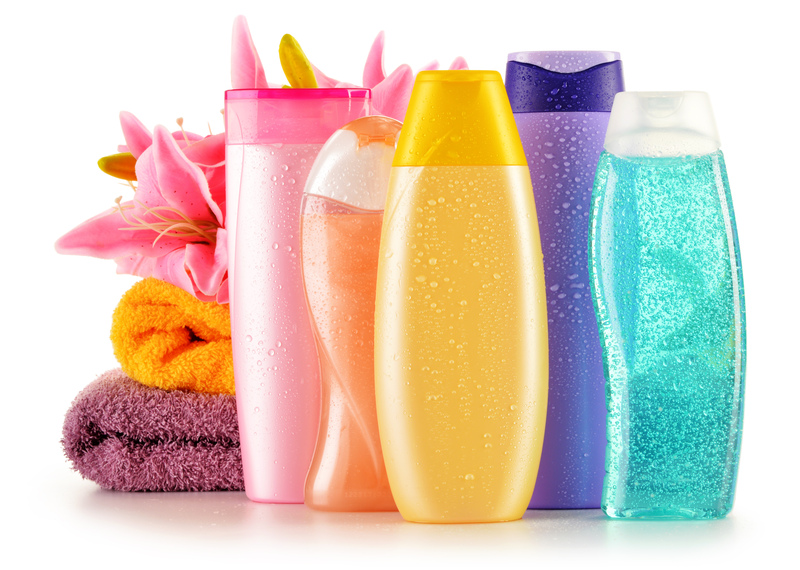Effective Solutions for Damp Smell Problems
Posted on 16/06/2025
Effective Solutions for Damp Smell Problems: A Comprehensive Guide
Dampness and the resulting musty odors are common nuisances in homes, offices, and commercial spaces. A persistent damp smell not only makes environments unpleasant but may also indicate underlying moisture issues that could affect health and property value. In this extensive guide, we delve into the causes of damp odors, their implications, and provide practical, effective solutions for damp smell problems, ensuring your space is fresh, healthy, and inviting.
Understanding Damp Smell Problems
Before tackling the issue, it's crucial to understand what causes damp smells and why addressing them is important.
What Causes Persistent Damp Smells?
- Excess Moisture: The most common cause is excess humidity or water intrusion, creating an ideal environment for mold and mildew to thrive.
- Inadequate Ventilation: Poor airflow prevents areas from drying out, allowing condensation and stale air to accumulate.
- Leaking Plumbing: Hidden leaks under sinks, behind walls, or floors often go undetected until a musty smell arises.
- Roof or Wall Leaks: Damaged roofs or improperly sealed walls allow rainwater to seep in, dampening materials and causing odor.
- Basements and Crawl Spaces: These areas are naturally humid and frequently susceptible to dampness due to their proximity to the soil.
Why Damp Odors Should Not Be Ignored
A musty damp smell can signal broader issues:
- Mold Growth: Prolonged dampness often leads to mold, which can damage property and trigger allergies or respiratory ailments.
- Structural Deterioration: Continuous exposure to moisture can weaken wood, drywall, and foundation materials.
- Pest Attraction: Damp environments attract pests such as termites and silverfish.
- Reduced Aesthetic Value: A home with a lingering musty odor can be difficult to sell and could lower property value.

Identifying the Source of the Damp Smell
To find the right solution for damp smell problems, start by accurately identifying the origin of the smell:
- Inspect for visible mold or mildew on walls, ceilings, and floors, particularly in corners or hidden areas.
- Check for condensation on windows, pipes, or in unventilated bathrooms and kitchens.
- Investigate for plumbing leaks under sinks, behind appliances, or within walls.
- Test humidity levels using a hygrometer; levels above 60% indicate excess moisture.
- Examine basements, attics, and crawlspaces for signs of water intrusion or earth-to-structure contact.
Effective Solutions for Damp Odor Issues
Once the source of the damp odor is found, these proven methods will help you banish damp smells from your indoor environment:
1. Improve Ventilation
One of the most effective ways to combat musty odors is by increasing airflow.
- Open windows and doors to let in fresh air.
- Install exhaust fans in high-moisture areas like bathrooms and kitchens.
- Use ceiling fans or portable fans for improved air circulation.
- In attics and crawlspaces, consider adding vents or powered ventilation systems.
2. Control Indoor Humidity
Lowering humidity levels prevents mold growth and removes the conditions that cause damp smells.
- Use a dehumidifier in basements, laundry rooms, or any humid area.
- Fix leaks promptly and ensure gutters direct water away from your building's foundation.
- Dry wet clothes outdoors if possible, instead of indoors.
- Check for and seal drafts that allow humid air inside.
3. Find and Eliminate Moisture Sources
- Inspect your property for leaking pipes, leaking roofs, or foundation cracks. Repair these issues to stop water ingress.
- Ensure gutters and downspouts are clear of debris and channel water away from the foundation with splash blocks or extensions.
- For crawl spaces, install a vapor barrier (such as polyethylene sheeting) across bare earth to reduce ground moisture.
4. Deep Clean Affected Areas
Removing the contaminants that cause damp smells is essential for a fresh indoor atmosphere.
- Clean mold and mildew using a mixture of white vinegar or hydrogen peroxide (always use appropriate safety precautions).
- Shampoo carpets and upholstery, which can absorb musty odors and moisture.
- Wash curtains, linens, and soft furnishings.
- Replace or professionally clean air filters and ductwork if necessary.
5. Use Natural Deodorizers
Natural products can help neutralize smells while you address moisture sources:
- Place baking soda bowls in musty rooms to absorb odors. Charcoal briquettes are also effective odor absorbers.
- Use commercially available moisture absorbers such as silica gel or calcium chloride in closets, cabinets, and small spaces.
- Essential oil diffusers can provide pleasant scents but should not be used as a substitute for addressing root causes.
Preventative Measures Against Damp Smell Recurrence
Even after resolving current damp odor issues, preventative actions are key to maintaining a healthy, odor-free home or workspace.
Regular Maintenance
- Inspect and maintain plumbing, roofing, and gutters at least twice yearly.
- Seal any cracks or openings in walls and foundations.
- Re-caulk windows and doors to prevent water and air leaks.
- Avoid storing items directly against exterior walls, as this can trap condensation.
Dehumidification Strategies
In naturally humid climates, ongoing humidity control is critical:
- Consider installing a whole-house dehumidifier connected to your HVAC system.
- Invest in humidity monitors for key areas and set alerts for high moisture levels.
- For window wells and basements, use sump pumps or French drains to manage water intrusion.
Improved Building Materials and Design
- If renovating, choose moisture-resistant drywall, paint, and flooring materials for basements, bathrooms, or kitchens.
- Opt for closed-cell spray foam insulation in crawlspaces and attics for its superior moisture barrier properties.
Health Implications of Damp and Musty Environments
Ignoring damp odors can have significant health ramifications. Prolonged exposure to dampness, mold, and mildew affects indoor air quality and can cause:
- Allergic Reactions: Symptoms include sneezing, coughing, runny nose, and skin irritation.
- Respiratory Issues: Asthma attacks or worsening of existing respiratory diseases, especially in vulnerable populations.
- Headaches and Fatigue: Poor air quality leads to general discomfort and reduced productivity.
- Infections: Some mold species produce mycotoxins, which can be dangerous in high quantities.
When to Call a Professional for Chronic Damp Smells
If your efforts to eliminate dank, musty odors have not succeeded, it may be time to contact a specialist. Situations that warrant professional intervention include:
- Recurring damp smell even after thorough cleaning and moisture control.
- Visible signs of black mold (Stachybotrys) or widespread mold growth.
- Suspected structural damage from prolonged dampness.
- Unidentifiable or inaccessible sources of water intrusion.
Professional services can conduct moisture mapping, mold remediation, and leak detection using specialized equipment such as infrared cameras and air quality monitors.

Frequently Asked Questions About Damp Smell Solutions
Can air fresheners permanently remove a musty odor?
No, air fresheners and sprays only mask odors. To permanently solve damp smells, locate and solve the underlying moisture problems.
How long does it take to get rid of damp smells?
Minor damp odors may dissipate within a few days after addressing moisture and cleaning affected areas. Severe cases, especially those involving mold damage, may take weeks or months and require professional remediation.
Is it possible to have a damp smell with no visible mold?
Yes. Mold can grow behind walls, under carpets, or in hidden areas. Persistent musty odors should always be investigated.
What household ingredients eliminate damp odors?
Baking soda, white vinegar, activated charcoal, and open bowls of coffee grounds can absorb and neutralize odors.
Summary: Take Action Against Damp Smell Issues
Addressing damp smell problems promptly not only leaves your space smelling fresher but also protects your health and home investment. Follow these effective solutions for damp odors:
- Identify and eliminate moisture sources.
- Improve ventilation and air circulation.
- Control indoor humidity for long-term results.
- Clean and deodorize affected areas using proven methods.
If the problem persists, consult a professional to prevent recurring issues and safeguard your environment. Say goodbye to damp, musty smells and enjoy a clean, healthy indoor atmosphere all year round!



